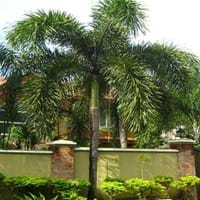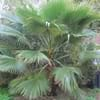Life Span
Annual
Perennial
Type
Palm or Cycad
Bulb or Corm or Tuber
Origin
Australia
South America
Types
Not Available
Pamianthe cardenasii , Pamianthe parviflora , Pamianthe peruviana
Number of Varieties
Not Available
Habitat
Forest edges
All sorts of environments
USDA Hardiness Zone
10-15
8-10
Sunset Zone
H1, H2, 24
21,22
Habit
Arching/Fountain-shaped
Clump-Forming
Flower Color Modifier
Bicolor
Bicolor
Fruit Color
Orange Red
Green
Leaf Color in Spring
Green
Dark Green
Leaf Color in Summer
Dark Green
Light Green
Leaf Color in Fall
Dark Green
Several shades of Green
Leaf Color in Winter
Green
Light Green
Leaf Shape
Linear
Strap shaped
Plant Season
Spring, Summer, Fall, Winter
Spring, Summer, Fall
Sunlight
Full Sun, Partial Sun
Partial Sun, Partial shade
Type of Soil
Loam, Sand
Loam, Sand
The pH of Soil
Acidic, Neutral
Acidic, Neutral, Alkaline
Soil Drainage
Well drained
Average
Bloom Time
Early Summer, Summer
Spring, Late Spring, Early Summer, Summer, Late Summer
Tolerances
Wet Site, Drought, Salt
Drought
Where to Plant?
Ground
Ground, Pot
How to Plant?
Seedlings, Transplanting
Offsets
Plant Maintenance
Medium
Medium
Watering Requirements
Does not require lot of watering, Use and maintain water-efficient soaker hoses, Use Mulches to help prevent water loss during hot and windy weather, Water in morning to avoid prompting diseases, Water twice a day in the initial period
Keep the ground moist but not water-logged
In Summer
Lots of watering
Lots of watering
In Spring
Moderate
Moderate
In Winter
Average Water
Average Water
Soil pH
Acidic, Neutral
Acidic, Neutral, Alkaline
Soil Type
Loam, Sand
Loam, Sand
Soil Drainage Capacity
Well drained
Average
Sun Exposure
Full Sun, Partial Sun
Partial Sun, Partial shade
Pruning
Remove damaged leaves, Remove dead branches, Remove dead leaves, Requires little pruning
Pinch or prune as they grow to promote branching and bushiness, Remove damaged leaves, Remove dead branches, Remove dead leaves, Requires little pruning
Fertilizers
All-Purpose Liquid Fertilizer
All-Purpose Liquid Fertilizer, High phosphorus
Pests and Diseases
Pests and diseases free
Leaf spot, Mosaic viruses
Plant Tolerance
Drought
Drought
Flower Petal Number
Single
Single
Foliage Texture
Fine
Coarse
Foliage Sheen
Matte
Glossy
Attracts
Not Available
Bees, Birds, Bumblebees, Butterflies, Hummingbirds, pollinators
Allergy
no allergic reactions
Unknown
Aesthetic Uses
Showy Purposes
Beautification, Bouquets, Ornamental use, Showy Purposes
Beauty Benefits
Not Available
No Beauty Benefits
Environmental Uses
Air purification
Air purification
Medicinal Uses
No Medicinal Use
No Medicinal Use
Part of Plant Used
Leaves
Not Available
Other Uses
Not Available
Beneficial species for attracting pollinators, Decoration Purposes
Used As Indoor Plant
No
No
Used As Outdoor Plant
Yes
Yes
Garden Design
Feature Plant, Foundation, Street Trees, Tropical
Bog Garden, Container, Feature Plant, Foundation, Mixed Border, Water Gardens
Botanical Name
WODYETIA bifurcata
HYMENOCALLIS longipetala
Common Name
Foxtail Palm
Peruvian Daffodil, Spiderlily
In Hindi
Foxtail palm
peruvian daffodil
In German
Fuchsschwanz -palme
peruvian daffodil
In French
sétaire palme
peruvian daffodil
In Spanish
la cola de zorra de palma
Pamianthe
In Greek
αλωπέκουρου παλάμη
peruvian daffodil
In Portuguese
foxtail palma
peruvian daffodil
In Polish
włośnica palmowy
peruvian daffodil
In Latin
foxtail palmarum
peruvian daffodil
Phylum
Tracheophyta
Magnoliophyta
Class
Liliopsida
Liliopsida
Order
Arecales
Asparagales
Family
Arecaceae
Amaryllidaceae
Clade
Angiosperms, Commelinids, Monocots
Angiosperms, Monocots
Tribe
Not Available
Clinantheae
Subfamily
Arecoideae
Amaryllidoideae
Number of Species
Not Available
Not Available
Properties of Foxtail Palm and Peruvian Daffodil
Wondering what are the properties of Foxtail Palm and Peruvian Daffodil? We provide you with everything About Foxtail Palm and Peruvian Daffodil. Foxtail Palm doesn't have thorns and Peruvian Daffodil doesn't have thorns. Also Foxtail Palm does not have fragrant flowers. Foxtail Palm has allergic reactions like no allergic reactions and Peruvian Daffodil has allergic reactions like no allergic reactions. Compare all the properties and characteristics of these two plants. Find out which of these plant can be used as indoor plant. If you are interested to decorate your house and garden, find out aesthetic uses, compare them and select the plant which will beautify your surrounding. Along with beautification, try comparing medicinal and edible uses of Foxtail Palm and Peruvian Daffodil and you can choose the plant having best and most benefits.
Season and Care of Foxtail Palm and Peruvian Daffodil
Season and care of Foxtail Palm and Peruvian Daffodil is important to know. While considering everything about Foxtail Palm and Peruvian Daffodil Care, growing season is an essential factor. Foxtail Palm season is Spring, Summer, Fall and Winter and Peruvian Daffodil season is Spring, Summer, Fall and Winter. The type of soil for Foxtail Palm is Loam, Sand and for Peruvian Daffodil is Loam, Sand while the PH of soil for Foxtail Palm is Acidic, Neutral and for Peruvian Daffodil is Acidic, Neutral, Alkaline.
Foxtail Palm and Peruvian Daffodil Physical Information
Foxtail Palm and Peruvian Daffodil physical information is very important for comparison. Foxtail Palm height is 760.00 cm and width 460.00 cm whereas Peruvian Daffodil height is 61.00 cm and width 61.00 cm. The color specification of Foxtail Palm and Peruvian Daffodil are as follows:
Foxtail Palm flower color: White
Foxtail Palm leaf color: Green
Peruvian Daffodil flower color: White
- Peruvian Daffodil leaf color: Dark Green
Care of Foxtail Palm and Peruvian Daffodil
Care of Foxtail Palm and Peruvian Daffodil include pruning, fertilizers, watering etc. Foxtail Palm pruning is done Remove damaged leaves, Remove dead branches, Remove dead leaves and Requires little pruning and Peruvian Daffodil pruning is done Pinch or prune as they grow to promote branching and bushiness, Remove damaged leaves, Remove dead branches, Remove dead leaves and Requires little pruning. In summer Foxtail Palm needs Lots of watering and in winter, it needs Average Water. Whereas, in summer Peruvian Daffodil needs Lots of watering and in winter, it needs Average Water.





